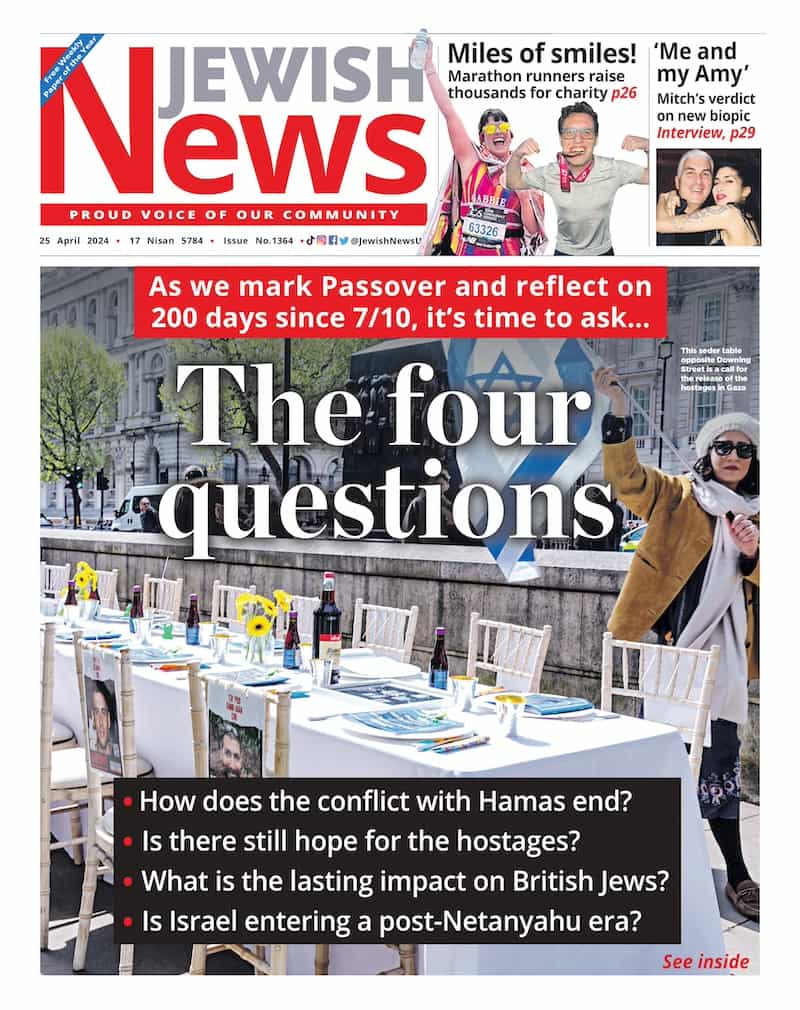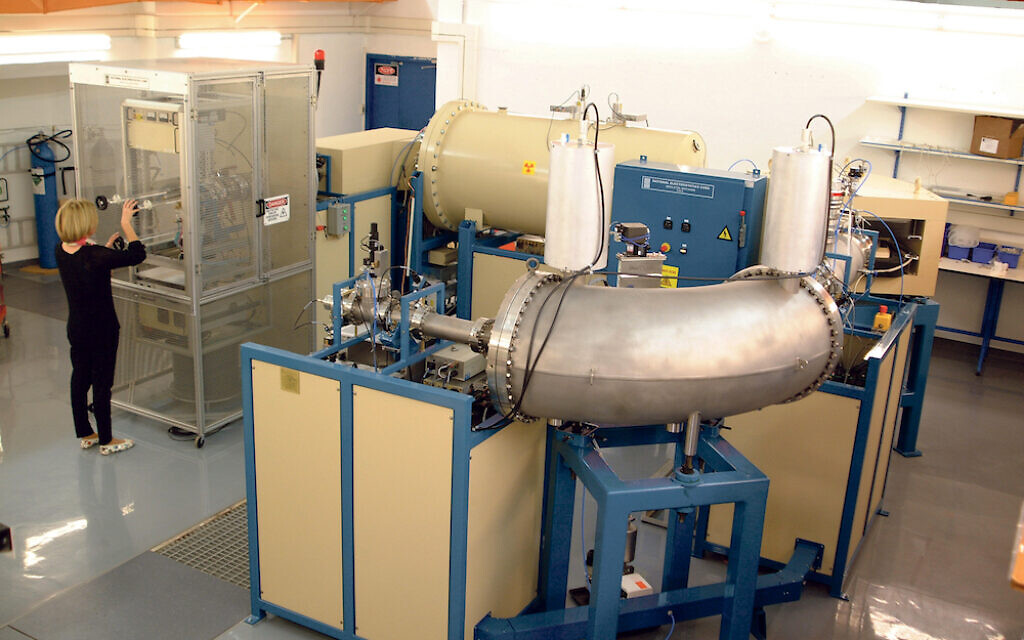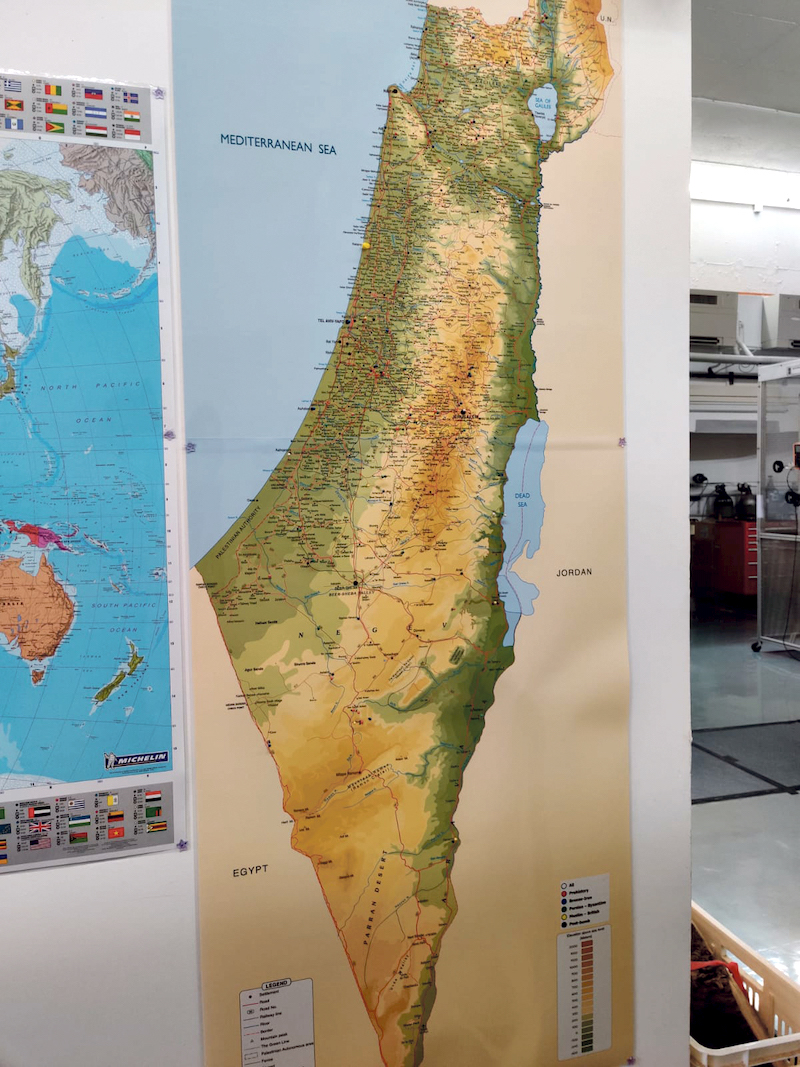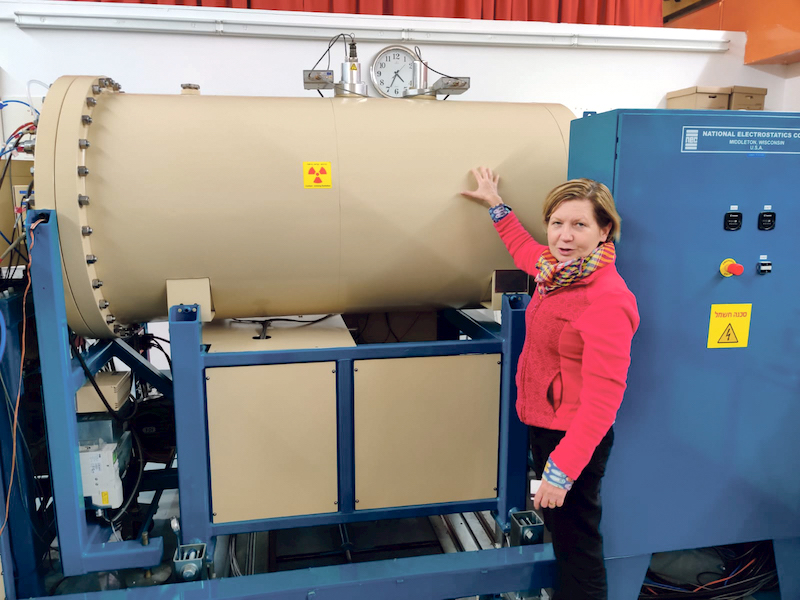The Israeli lab keeping cultural heritage alive
We take a tour of a special laboratory in Rehovot that is focused on preserving and dating history – and has even rewritten it
Scientists at the D-REAMS radiocarbon laboratory in the Scientific Archaeology Unit at the Weizmann Institute in Israel like seeds and nuts because they can date them.
Give a D-REAMer a hazelnut found in, for instance, an early Bronze Age burial chamber, and they can date it to within 20 years, assuming that the nut was harvested close to the time of the burial.
D-REAM stands for the Dangoor Research Accelerator Mass Spectrometry Laboratory, inaugurated in 2012 by British Jewish philanthropist David Dangoor and his wife Judy, both scientists.
Get The Jewish News Daily Edition by email and never miss our top stories Free Sign Up
The lab is run by Italian-born Elisabetta Boaretto – described as “one of the rock-stars of archaeology” – together with her colleague Lior Regev, and they gave me a tour just before the country began closing its borders.
This is a place of work and study. Give them a viable organic sample, such as a bone fragment, and the team gets pre-screening, pre-treating, CO2 extracting, graphitising, pressing and AMS-ing to work out its age. It is a world of catalyst weights, cathode locations, infrared analysis, field calibration, cellulose fractions, oxelate peaks, “probable absolutes” and something intriguingly called a “wiggle model”.
I understand very little of it, but you can’t miss it, because it’s at the base of a tall otherworldly white building that has what looks like a giant ten-metre egg on top of it. The taxi driver gave me a look when dropping me off.
Back in the UK, via Zoom, I ask Dangoor why he funds it. He says it is about increasing the scope of what you can date, reducing the turn-around time of that dating, and ultimately, of linking this sometimes-dry science to all of us, and to our emotions.
“The essence of this AMS machine is not that it’s carbon-dating – that’s been going on for decades – it’s that it lets you carbon-date a tiny fragment. With other machines you need half a cupful of the material.”
There was, and is, no such other machine in the Middle East, he says, “yet for much of history the Middle East is the cradle of many civilisations. Now we’ve got one on home ground.”
Of its impact, he tells me that Elisabetta used to have to send fragments to the US then wait six months for results. “There’s a queue. When it comes back, you want to interrogate the answer, because you’re contradicting history here, you’re challenging ideas [in this case, of age], that’s what science does. With this machine she can do all that investigating in two or three days. It transforms the whole process.”
Upon what is that process based? Get comfortable, let’s start from on high. Cosmic rays bombard Earth’s upper atmosphere producing fast-moving neutrons which collide with atmospheric nitrogen atoms. This produces radioactive Carbon-14, aka radiocarbon, aka C-14.
Plants absorb carbon dioxide and incorporate C-14 through photosynthesis (what Judy did her PhD in). Animals and people then eat the plants and take in C-14. When they die, their C-14 content reduces at a rate determined by the law of radioactive decay. Carbon-dating measures this decay to see how old something is.
We know, thanks to a Nobel Prize-winning chemist, that the half-life of C-14 is 5,568 years, give or take. This means that Elisabetta’s team can very accurately gauge the age of only 1mg of almost any organic matter from the last 50,000 years.
“The Dangoor family, starting with David’s father [Naim], have always been interested in keeping cultural heritage alive, whether Jewish life in Iraq or fellowships in Jewish history, or digitally documenting and archiving ancient Jewish manuscripts in museums” she says.
“You preserve history and at the same time you educate a new generation of scientists and students who are fascinated by the past. Here in Israel, we are at the forefront of archaeological science, using the Accelerator to build chronologies. We have great questions about the past.”
Date the nut, seed, bone or bark and you can date the pottery, walls or adornments that are found alongside them, so the theory goes. “If I find only one seed on the floor but that seed was burned in-situ then I can date when that floor was in use.”
What does an Accelerator look like? Big and complicated – a hall-sized series of chambers, tubes, callipers and screens that goes from zero to half a million volts quickly. It is also rare, one of only 13 in the world. I’m told it doesn’t have a name. It feels like it should.
I ask Elisabetta how it works. This sends her off into shelves and drawers to show me samples before scribbling images of neutrons and protons and electrons. “In order to be a carrr-bon, you need – a – six – a – prrro-ton,” she says in a wonderful Italian accent. “If you ‘ave – a – five – a – prrro-ton, you are – a – not a carrr-bon.” Strict rules, sorry.
Some D-REAMers work on-site where archaeologists dig in layers, and you need to be sure which layer your sample comes from, Elisabetta says, otherwise you can date the wrong thing. Among the oldest items she has tested were Palaeolithic samples found near David Ben-Gurion’s old home in the Negev.
She says the work updates established chronologies, including our understanding of how and when early man made his way out of Africa and what tools he was using at the time. “That’s really at the limit of our detection.”
It is truly fascinating. What other history has she changed, I wonder? “We moved the age of a tower in Jerusalem by 800 years,” she says casually, as if it’s nothing. My jaw drops.
“It was supposed to date from 1700 BC, this Gihon Tower. It has these huge stones at the base. We found them lying in sediments, three clear levels of occupation or age. In the sediments were samples – charcoal, bones… All three we dated to 900 BC. We moved the tower from the Bronze Age to the Iron Age.”
She does this regularly, apparently. On one recent dig, archaeologists excavating the walls for frescoes directed Elisabetta to an area of less obvious interest.
“It turned out to be stables,” says Dangoor with delight. “She could work out what animals were kept, what diseases they had, what food they ate… Once you’re able to date these tiny bits, there’s a lot of information the ordinary eye can’t see, and sadly here, nor could the archaeologists.”
Of more significance is her current work in Herodion, a mound outside Jerusalem, where King Herod lived in a fortress. “Before he died he arranged for the whole thing to be filled in and for his mausoleum to be built near the top,” says Dangoor, explaining the mound.
“The mausoleum was plundered long ago, but during the Bar Kokhba Revolt 100 years after Herod died, Jewish freedom fighters built tunnels into this mound. They would attack the Roman soldiers then rush into the tunnels to hide.
“The theory was that the fighters had no local support to get local timber so used the beams from Herod’s original construction to hold the tunnels up, but Elisabetta dated the wood decisively to 100 years after Herod.
“The implication is that the support these fighters had from the general population was such that networks were providing them with timber, albeit secretly. It shows secret cooperation from local people. It has the effect of reinterpreting events.”
So, by more accurately dating samples, Dangoor’s D-REAMers are “moving time” and updating history. As the coronavirus creates its own history for today’s generation, it helps to know that there is a team of scientists in Israel keeping the time-line honest.

Thank you for helping to make Jewish News the leading source of news and opinion for the UK Jewish community. Today we're asking for your invaluable help to continue putting our community first in everything we do.
For as little as £5 a month you can help sustain the vital work we do in celebrating and standing up for Jewish life in Britain.
Jewish News holds our community together and keeps us connected. Like a synagogue, it’s where people turn to feel part of something bigger. It also proudly shows the rest of Britain the vibrancy and rich culture of modern Jewish life.
You can make a quick and easy one-off or monthly contribution of £5, £10, £20 or any other sum you’re comfortable with.
100% of your donation will help us continue celebrating our community, in all its dynamic diversity...
Engaging
Being a community platform means so much more than producing a newspaper and website. One of our proudest roles is media partnering with our invaluable charities to amplify the outstanding work they do to help us all.
Celebrating
There’s no shortage of oys in the world but Jewish News takes every opportunity to celebrate the joys too, through projects like Night of Heroes, 40 Under 40 and other compelling countdowns that make the community kvell with pride.
Pioneering
In the first collaboration between media outlets from different faiths, Jewish News worked with British Muslim TV and Church Times to produce a list of young activists leading the way on interfaith understanding.
Campaigning
Royal Mail issued a stamp honouring Holocaust hero Sir Nicholas Winton after a Jewish News campaign attracted more than 100,000 backers. Jewish Newsalso produces special editions of the paper highlighting pressing issues including mental health and Holocaust remembrance.
Easy access
In an age when news is readily accessible, Jewish News provides high-quality content free online and offline, removing any financial barriers to connecting people.
Voice of our community to wider society
The Jewish News team regularly appears on TV, radio and on the pages of the national press to comment on stories about the Jewish community. Easy access to the paper on the streets of London also means Jewish News provides an invaluable window into the community for the country at large.
We hope you agree all this is worth preserving.
-
By Brigit Grant
-
By Laurent Vaughan - Senior Associate (Bishop & Sewell Solicitors)
-
By Laurent Vaughan - Senior Associate (Bishop & Sewell Solicitors)
-
By Laurent Vaughan - Senior Associate (Bishop & Sewell Solicitors)
-
By Laurent Vaughan - Senior Associate (Bishop & Sewell Solicitors)
























